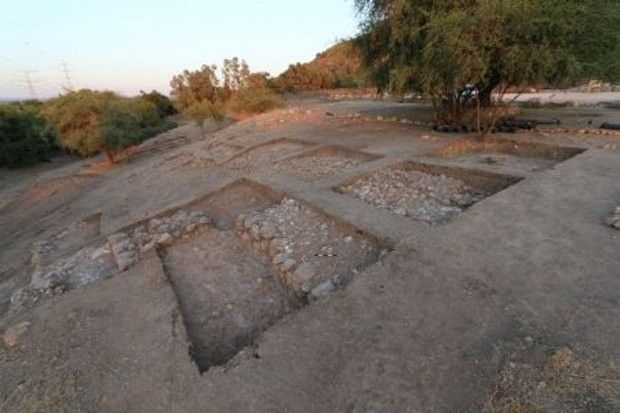A couple of decades back, in 1996, archaeologist Aren Maeir of the Bar-Illan University in Israel and his team got to work excavating a mound believed to be the remains of the ancient city of Gath of the Philistines, referenced in the Bible as the home of the giant warrior Goliath.
It took them quite a while, but as it turns out, the researchers are at long last starting to make sense of the geography of this biblical city. Thus, in a new report, they announce the discovery of its entrance gate, a fortification wall and even several buildings, a temple and an iron workshop among them.
“The Ackerman Family Bar-Ilan University Expedition to Gath, headed by Prof. Aren Maeir, has discovered the fortifications and entrance gate of the biblical city of Gath of the Philistines, home of Goliath,” the archaeologists write.
“In addition to the monumental gate, an impressive fortification wall was discovered, as well as various building in its vicinity, such as a temple and an iron production facility,” they further detail.
A Goliath might have actually lived here
Apart from this ancient infrastructure, the team has discovered a cohort of artifacts, among them the earliest decipherable Philistine inscription to date. The odd thing about this long-lost inscription is that it includes a couple of names that are strikingly similar to the name Goliath.
Whether the inscription references the biblical Goliath or just some random individual who happened to bear this name in ancient times is a mystery yet to be solved.
The archaeological site, located halfway between the cities of Jerusalem and Ashkelon in central Israel, is yet to be fully excavated. Researcher Aren Maeir and his colleagues plan to go on exploring it and hope to soon learn more about its history.
The city was once the largest in the land
Around the 10th or maybe 9th century BCE, the biblical city of Gath, one of the five Philistine city-states, was the largest in the land, historical records reveal.
Mind you, the remains so far found by archaeologists confirm these accounts. According to Aren Maeir, the entrance gate to the ancient city by Gath is by far the absolute biggest until now discovered in Israel. The fortification wall is not to be ignored either.
The city is believed to have been lost to history around 830 BCE, when it was attacked and pillaged by Hazael King of Aram Damascus and his armies.

 14 DAY TRIAL //
14 DAY TRIAL // 

